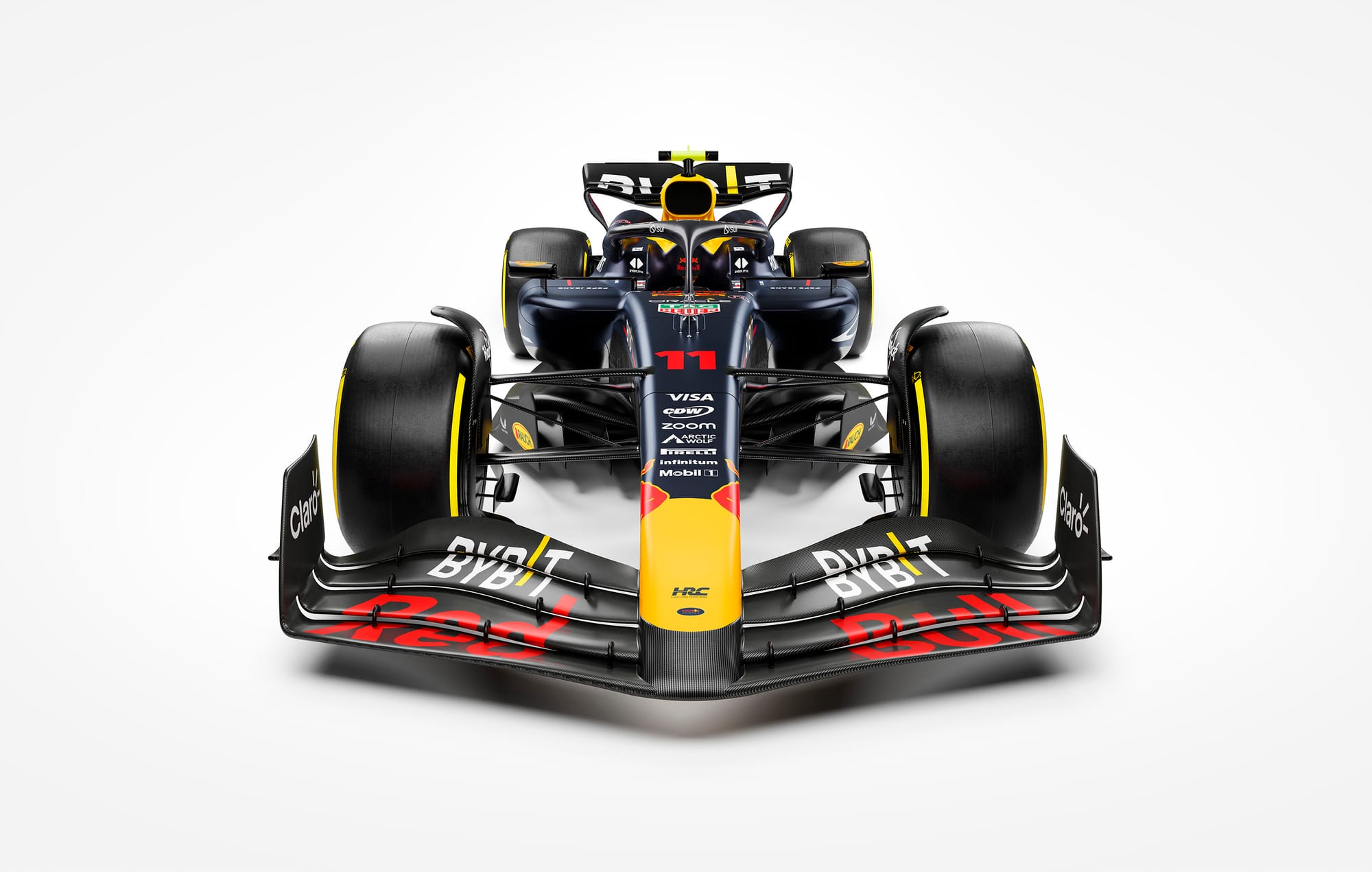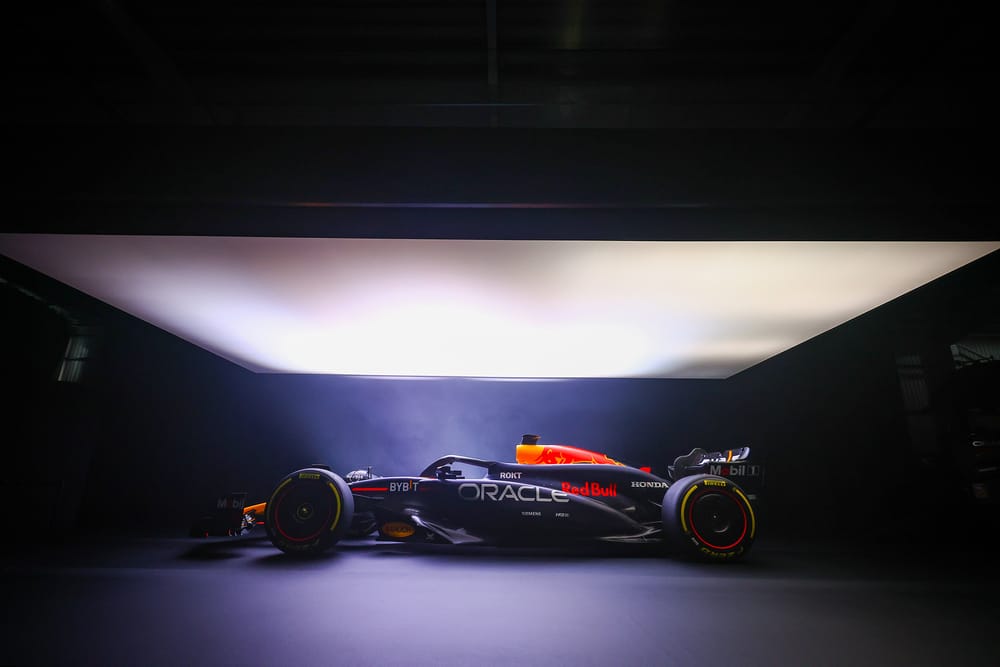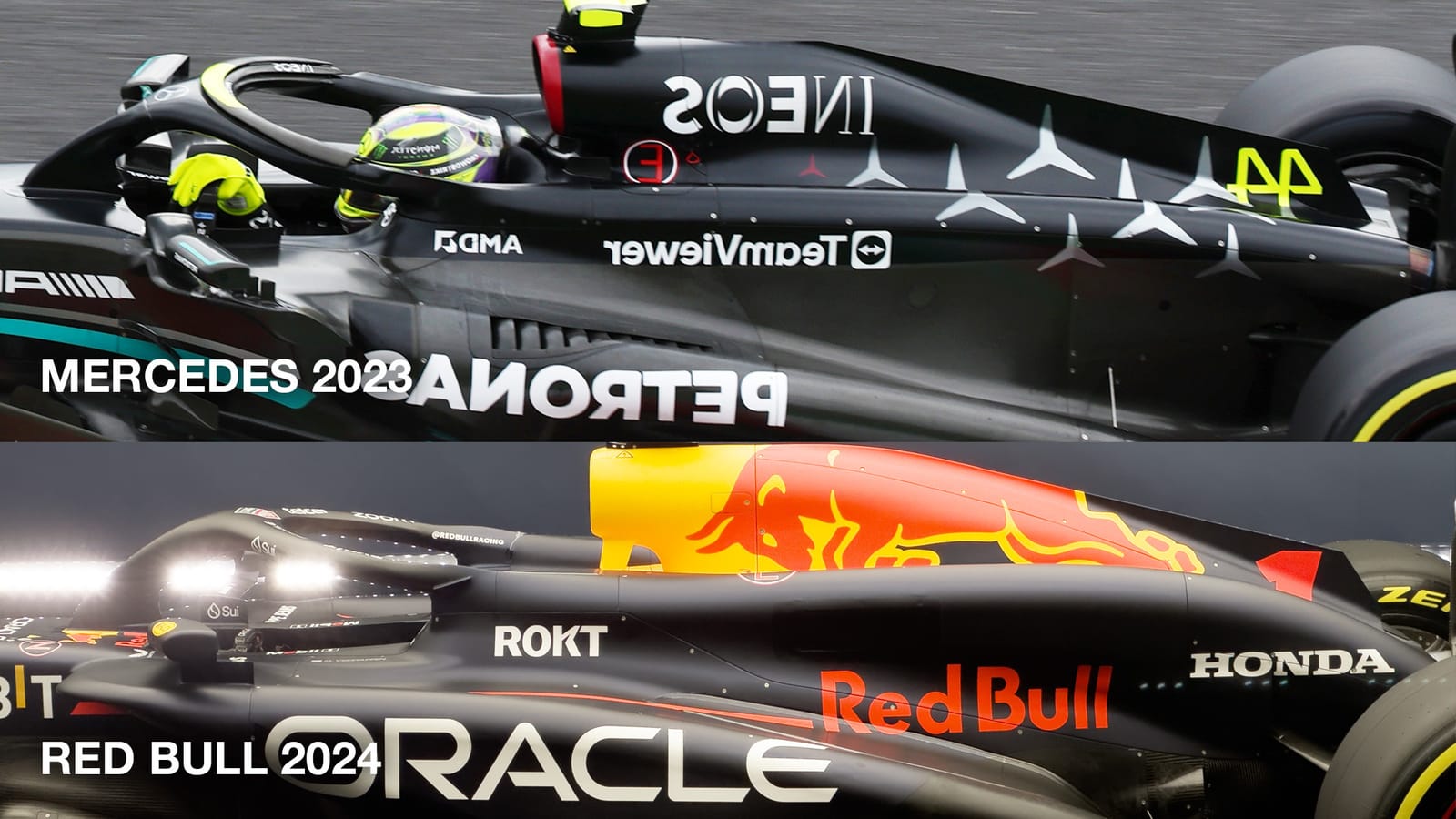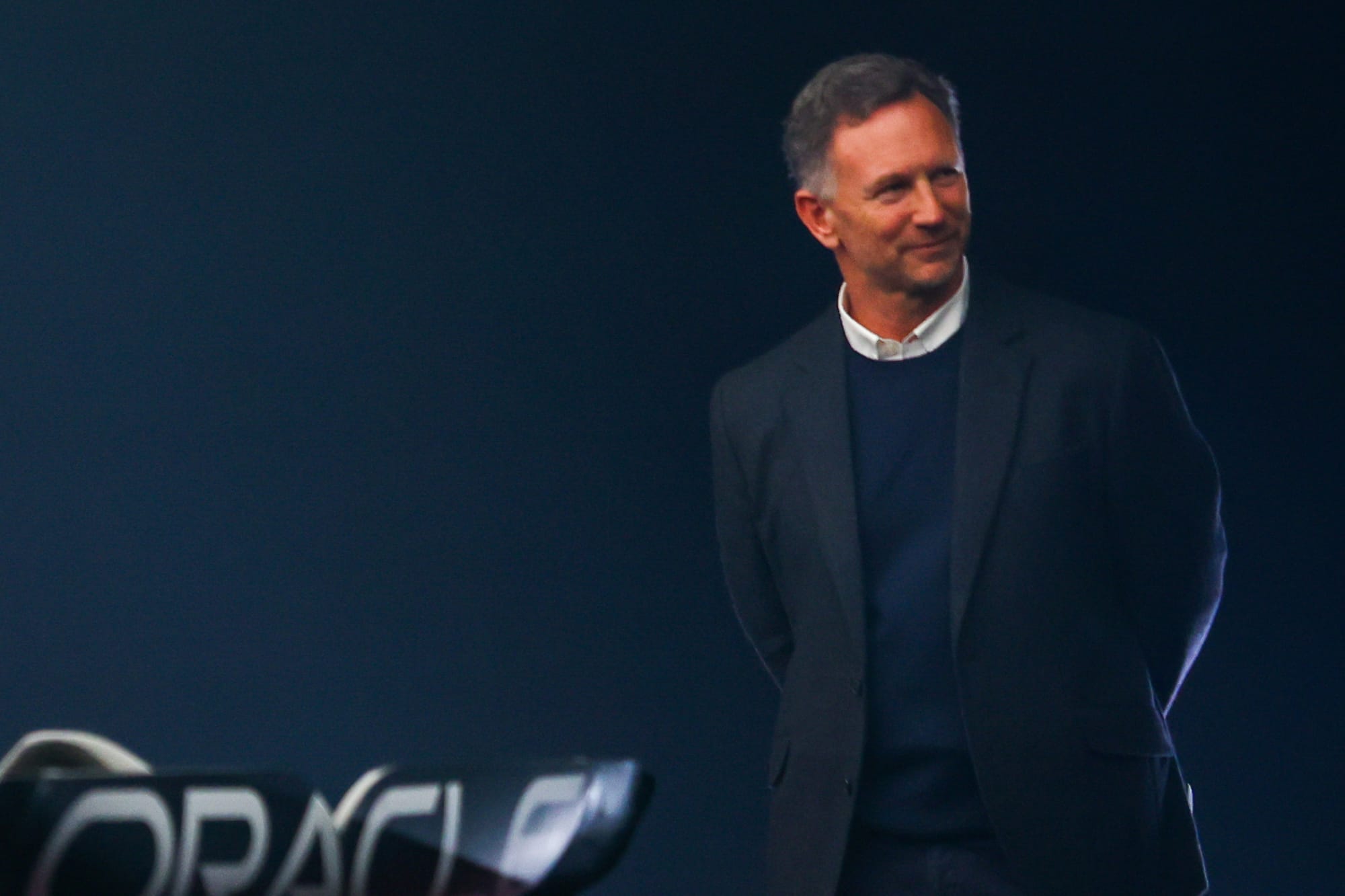Up Next

Lots of turmoil going on in the background at Red Bull, but the team needs to make sure this doesn’t destabilise its plans for the 2024 Formula 1 season.
Red Bull has dominated the past two seasons, and for any team it’s difficult to keep up that momentum.
For a team that’s won 38 out of 44 races under these ground-effect rules, you’d think it would be difficult to improve - but I don’t think that’s the way Red Bull thinks.
Going into the third season of these rules, perhaps finding that eye-catching ‘wow’ direction will be difficult - but Red Bull will be pushing for every gram of downforce and to save every gram of weight. No stone will be left unturned.

My first reaction is this car is far from a mere evolution of the very successful RB19.
I think there will be a few other teams’ technical departments going ‘holy sh*t’, where do we go from here?’.
And personally I don’t 100% think that what we are seeing here is what we will see in Bahrain for testing and the season-opener. What I think we will see there might just even be that bit further down the road. But I say it again, we can only comment on what we see - even the renders Red Bull issued on Thursday night differed from what we believe is a more realistic car shown at the launch event itself.
So let's take a closer look at the car Red Bull unveiled at its launch.
FRONT WING AND SUSPENSION
The front wing and front wing endplates look very similar to the 2023 version.
As I often say, it’s a bolt-on component so with five days until the car runs in Bahrain and Red Bull’s ability to produce car components at the snap of a finger, that’s plenty of time to make an updated version.
Now the reason I have highlighted the front of the nose with the green ellipse below is that I don’t think this is what we will see in Bahrain.
First of all, there is no entry duct in that area and we know from the past that Adrian Newey is the king of optimising flow through that bluff nose area.
Also, Red Bull supposedly had a few problems with the frontal impact test. With this nose I see no difficulty, so I have a funny suspicion that we might see something that has a shorter nose with only the third and fourth front wing element mounted directly to it, with the other two hanging off that - creating twin slot gaps.
The front suspension layout is as last year: pullrod (in red), top wishbone forward leg (dark green), rearward leg (light green), lower wishbone forward leg (dark blue) and we can just spot the rearward leg on the new car (in light blue).
The trackrod (in magenta), in contrast to most other teams', is a standalone component.
This does give you that little bit more blockage from the front suspension components, but it also gives you another aerodynamic profile to help realign the airflow coming off the front wing.
This suspension comparison shot from behind shows that the layout is very similar to 2023. If anything the lower wishbone rear leg, which is highlighted in light blue, might just be that fraction higher, which would increase the anti dive very slightly.
SIDEPOD INLET SURPRISE
This area will have taken everyone by surprise, not least me. But I did say a while ago that if Red Bull came up with a ‘zero-pod’ sidepod concept it would put a smile on my face.
As of yet we can’t really see the detail of it, but from this side shot it is different to what everyone expected.
I’m not really sure if the vertical radiator inlet is split in two or not. For this illustration I have separated it to green and yellow highlight arrows.
Either way it is a very narrow inlet duct tight against the side of the chassis, so still plenty of room for the sidepod corner undercut.
We can see how compact everything is by the red ellipse highlighting the lower side impact protection structure (SIPS). The top of the sidepod inlet is probably housing the upper SIPS, but it's such a vast change in design philosophy, especially when to me the inlet system on last year's RB19 made sense. I’m not seeing the sense in what Red Bull has done here just yet.
In the past I have been a fan of the 'limpet' and twin radiator inlet style, but things are so different now and the evaluation and research tools that a team has means that you are not just sticking your finger up in the air to see which way the wind is blowing.
So I’m pretty sure Red Bull’s research and analysis has taken the team down this route. As many people say, Newey can ‘see’ airflow.
I just hope it isn’t time for a trip to Specsavers.
HOW THAT INLET HAS CHANGED
This Red Bull 2023/24 comparison shows overall the new car has a taller undercut opening, so if it’s mass flow Red Bull is chasing through there then it will have achieved that.
My biggest worry would be what happens when the radiator spillage is pulled through into that undercut area?
We can see here that the top of the sidepod undercut is much deeper than previously. It is now more or less at the top of the chassis. So I can only assume that was the challenge Red Bull had in mind and the radiator inlet was created to make that possible.
Last year, Red Bull’s development direction was to increase the height of the radiator lower inlet surface. Now it has just simply done away with it and extended the top surface.
There might even be reason to believe that this modification has allowed it to lift the leading edge of the floor slightly.
HOW THAT INLET COMPARES TO 2023 MERCEDES
At the launch several journalists commented on similarities between Red Bull's latest route and what Mercedes did last year. But in this Mercedes comparison we can see the 2024 Red Bull inlet is still very different from the 2023 Mercedes concept.
The Mercedes version had the complete sidepod front corner inboard so it wasn’t an undercut containing and redirecting the airflow through to the front floor corner scavenging devices (shown on the Mercedes with a green ellipse).
This flow just went around the sidepod side surface (yellow arrows through to the back of the car). Red Bull still focuses that flow on that front corner of the yet-to-be-disclosed underfloor front corner.
THE RB20’S CLEVER COOLING PACKAGE
To get the cooling that is required, the airflow goes in the front of the bodywork and out of the rear. Between those two there is a radiator package that has to cool all of the components that are under the bodywork: power unit water and oil, plenum, ERS control unit, battery pack, gearbox oil and hydraulic fluid.
It doesn’t really matter if the cooling is by individual air-to-fluid coolers or if some is by heat exchangers - air-to-air, fluid-to-fluid or even fluid-to-air - as potentially with the plenum, the total heat rejection of all of these components has to be kept under control with that airflow from the radiator inlet to the radiator exit has to achieve that.
For years the teams have been trying to come up with some magic cooling technology and I am sure this has allowed them to reduce the size and weight of the mechanical coolers, but still ‘X’ amount of heat rejection from all those components requires ‘X’ amount of cooling. If you can achieve that then you will have a steady state temperature profile at the end of each lap.
Under the external bodywork you have the chassis, which houses the fuel tank, the power unit mechanical package, the transmission and the inboard suspension layout. These will all be covered with an internal bodywork. The exhaust and turbo system will be inside there as well, but it will be wrapped to keep as much heat in it as possible.
Heat is energy which improves the performance of the turbo and the performance of the MGU-H when the turbo is driving it. That wrapping also reduces heat transfer from it into the components around the exhaust system and turbo.
These mechanical components will be placed around the car external to that inner bodywork. The gap between the inner bodywork and the external bodywork is the flow volume of the cooling system, and it is important that you have some degree of expansion as you go through the car’s cross section going rearward.
You want to minimise the external bodywork cross section, especially in the critical downforce producing airflow areas, so that is why you end up with what looks like an elephant trunk duct (green ellipse, above) coming off the rear of the halo side supports.
It allows the external bodywork below it to be much tighter to the mechanical parts underneath that bodywork, and for the sidepod to drop off to more or less nothing (red ellipse, above) much earlier.
COOLING EXITS
We can just see a small exit duct (red ellipse, above) fairly low in the inner part of what in the past was called the 'coke bottle' area.
This could be a dedicated cooling duct to take some of the heat out of the MGU-H, which is down in there somewhere and doesn’t like to be overheated.
We can also see that the top surface of the sidepod just below that duct drops off even earlier than the outer section (blue highlight).
The body line inside of the elephant’s trunk from the driver’s headrest will be fairly different from what we see from the side view of the car - more like my green arrows (above).
This shot also shows - or depending on how you want to look at it doesn't show - the outer floor edge detail (yellow ellipse, above), so I suppose from the fact Red Bull wants to hide it we can expect something different in that area come Bahrain.
Just putting a reference line (green highlight, above) through from the same point on the halo shows that the elephant’s trunk will also reduce the flow that would probably have spilled off the top bodyline down into the low pressure area of the coke bottle (light blue arrows).
REAR SUSPENSION
Again the rear suspension is a similar layout to last year's RB19: pushrod (in red), top wishbone forward leg (dark green), rear leg (light green), lower wishbone forward leg (blue).
I can’t see the rear leg here, only a shadow of what I believe is the driveshaft shroud.
If anything, it looks like the pushrod inboard end is further forward and the upper wishbone inboard front pick-up is just that little be lower.
It might all be just the angle of the picture in the comparison - at the launch Red Bull made a concerted effort to prevent the media from taking proper pictures of the front and rear of the car - but if that is so then it would give just that little bit more anti-lift to stabilise the rear of the car under braking.
REAR WING
We saw on the W15 rear wing that Mercedes had followed the direction set out last year by McLaren and put a lot of effort into detaching the rear wing flap from the wing endplates. So with Red Bull it’s a case of ‘anything you can do we can do better’. This is what you can call really detached.
For a couple of seasons Red Bull has been the master of drag reduction when the DRS is open. Red Bull’s cars haven’t quite been as efficient when it was shut, as its philosophy had always been that you need maximum usable downforce to achieve minimum lap time, also that downforce helps reduce the degradation on the tyres when Max Verstappen is streaking out in front on his own.
If for some strange reason, which we don’t see very often, Red Bull has to get the hammer down and catch another car, without the DRS open it has that downforce advantage. When it catches up, it has drag reduction with the DRS, and with DRS being used in qualifying as well it really is a no-brainer to treat the DRS as part of your car concept and not just an add-on.
CONCLUSION
From what we have seen at the launch of RB20 it’s a change of philosophy from Red Bull and I am expecting that what we will see in Bahrain to be another step. If it is then the others have been once again outwitted.
That said, this change of philosophy could very easily bring Red Bull some problems that haven’t been foreseen - but I’m not expecting that.
Red Bull has had such a firm handle on these ground-effect regulations for the past two years, why should it lose itself now?






